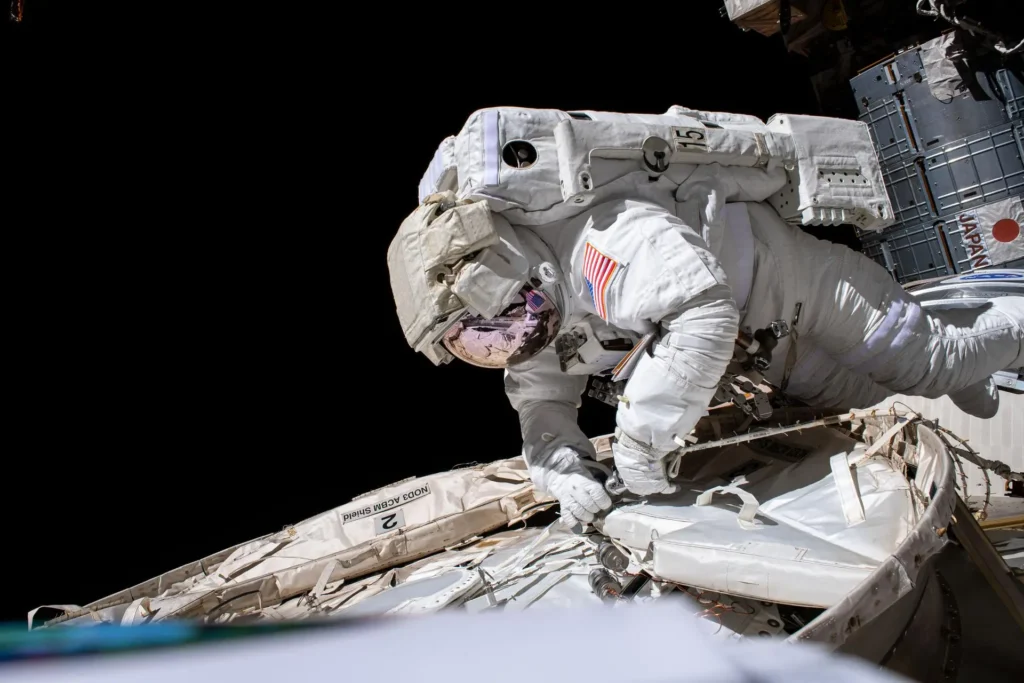NASA Astronauts Return from Extended Space Station Stay Prompted by Boeing Problems

NASA Astronauts Return from Extended Space Station
Space exploration is a field defined by its unpredictability. Despite meticulous planning and cutting-edge technology, challenges often arise that require quick thinking, adaptability, and resilience. This was recently exemplified by NASA astronauts who returned to Earth after an unexpectedly prolonged stay aboard the International Space Station (ISS). Their extended mission, caused by technical issues with Boeing’s Starliner spacecraft, underscores the complexities of human spaceflight and the importance of robust contingency planning.
Table of Contents
ToggleThe Mission Context

Mission Context
The astronauts were part of NASA’s Commercial Crew Program, a initiative designed to partner with private companies like Boeing and SpaceX to transport astronauts to and from the ISS. This program represents a shift in NASA’s approach to space travel, leveraging the innovation and efficiency of the private sector while maintaining the agency’s rigorous safety standards.
The mission began as a routine expedition to the ISS, with the astronauts launching aboard a SpaceX Crew Dragon spacecraft. Their primary objectives included conducting scientific experiments, maintaining the ISS, and preparing for future missions. However, the return phase of their journey encountered unexpected hurdles due to issues with Boeing’s Starliner, which was initially slated to bring them back to Earth.
Boeing’s Starliner Challenges

Boeing’s Starliner Challenges
Boeing’s Starliner spacecraft has faced a series of setbacks since its inception. Designed to be a reliable vehicle for transporting astronauts, the Starliner has encountered technical problems during both uncrewed and crewed test flights. These issues have ranged from software glitches to propulsion system anomalies, raising concerns about the spacecraft’s readiness for operational missions.
In this particular instance, the Starliner was scheduled to dock with the ISS and return the astronauts to Earth. However, during pre-flight checks, engineers identified potential problems with the spacecraft’s thrusters and helium leaks. These issues posed significant risks, prompting NASA and Boeing to delay the mission and prioritize safety over expediency.
The Decision to Extend the ISS Stay

The Decision to Extend the ISS Stay
With the Starliner deemed unfit for the return journey, NASA had to make a critical decision. The agency could either attempt to resolve the issues quickly or extend the astronauts’ stay on the ISS until an alternative return vehicle was available. Given the potential dangers of rushing repairs, NASA opted for the latter, ensuring that the astronauts remained in the safe and familiar environment of the ISS.
This decision underscored NASA’s commitment to safety and its ability to adapt to unforeseen circumstances. The ISS is equipped with ample supplies and resources to support astronauts for extended periods, making it an ideal fallback option in such situations. Additionally, the astronauts were trained to handle extended missions, allowing them to continue their work without significant disruption
Life on the ISS During the Extended Stay
For the astronauts, the extended stay meant more time to conduct experiments and contribute to the ongoing research aboard the ISS. The microgravity environment of the station provides unique opportunities for scientific discovery, particularly in fields like biology, physics, and materials science. The astronauts also played a crucial role in maintaining the station’s systems, ensuring that it remained operational for future crews.
Despite the challenges, the astronauts maintained a positive outlook, viewing the extended stay as an opportunity to further their contributions to space exploration. They remained in constant communication with mission control, receiving updates on the Starliner’s status and participating in decision-making processes.
The Return to Earth

Return to Earth
After several weeks of waiting, NASA and Boeing determined that the Starliner was not yet ready for a crewed return mission. As a result, the astronauts returned to Earth aboard a SpaceX Crew Dragon spacecraft, which had been prepared as a backup option. The successful landing marked the end of a mission that had been longer and more complex than originally planned.
The return journey itself was a testament to the robustness of the Crew Dragon spacecraft and the expertise of the teams involved. The astronauts underwent standard post-flight medical evaluations and were reunited with their families, bringing a heartwarming conclusion to their extended adventure.
Lessons Learned and the Future of Space Travel
This incident serves as a reminder of the inherent risks and uncertainties of space exploration. While setbacks like these can be frustrating, they also provide valuable lessons for improving future missions. NASA and its partners are already working to address the issues with the Starliner, ensuring that it meets the high standards required for crewed spaceflight.
Moreover, the incident highlights the importance of having multiple options for transporting astronauts to and from the ISS. The collaboration between NASA, SpaceX, and Boeing exemplifies the benefits of a diversified approach to space travel, where redundancy and flexibility are key to overcoming challenges.
Conclusion
The extended stay of NASA astronauts aboard the ISS, prompted by Boeing’s Starliner problems, is a story of resilience, adaptability, and the relentless pursuit of safety in space exploration. While the journey did not go as planned, it demonstrated the strength of the partnerships and systems that underpin human spaceflight. As we look to the future, these experiences will undoubtedly inform and inspire the next generation of missions, bringing us closer to unlocking the mysteries of the cosmos.
In the end, the astronauts’ safe return is a testament to the dedication and ingenuity of everyone involved in the mission. Their extended stay may have been unexpected, but it also provided an opportunity to further our understanding of life in space and the challenges of long-duration missions. As we continue to push the boundaries of exploration, stories like these remind us of the importance of perseverance and the spirit of discovery that drives us forward.




